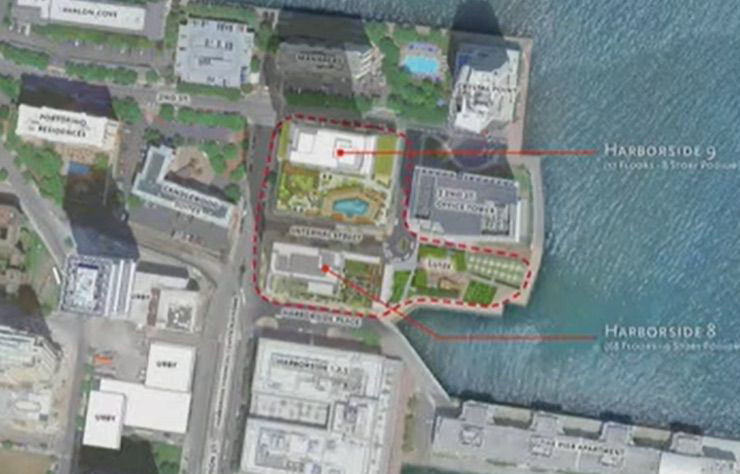The Rise of Medtail: Medical and Healthcare Tenants Occupying Ground-Floor Leases - by Nathaniel Mallon

Conditions related to the COVID-19 pandemic have led some retailers to adopt a more permanent e-commerce business model. Forced to give up prime locations in street-level storefronts, malls, and shopping centers, these owner-operators have decided to pivot indefinitely to online models for moving inventory. As a result, a new retail landscape is emerging in communities all across the country as healthcare providers move in to occupy these spaces, abandoning their traditional office paradigm for greater access, convenience, and visibility.
This new opportunity in ground-floor leasing has become especially popular among medical practices and related facilities. While tenants gain access to daily, high-volume consumer foot traffic, landlords gain peace of mind, knowing that doctors, dentists, and other healthcare providers are valuable assets, able to bring employed, insured patients to their offices, ultimately increasing spending within the surrounding retail setting and luring higher profile clients to other portfolio properties.
Today, we are seeing a surge of medical tenants taking the opportunity to lease ground-floor real estate as landlords who are reeling from the pandemic seek the advantages of longer term, more stable tenants who retain their value during hard times. Here’s a quick snapshot of what’s driving this trend.
Medical Tenant Demand Is Changing Retail Landlord TI Packages
Medical tenants are taking advantage of new vacancies in retail spaces, which has prompted landlords to offer higher tenant improvement (TI) capital compared to what they previously have given retailers.
Evan Gassman, broker at CARR who specializes in representing healthcare providers, chimes in on the current trend, explaining that “healthcare is an expensive buildout,” especially when tenants such as dentists require specialized plumbing and face the challenges of meeting ADA requirements. However, these tenants, he says, have a much higher success rate than restaurants and other retailers.
So, although the concessions New York landlords must make for medical tenants far exceed those of past retailers, they recognize the potential of renting to healthcare providers. Gassman shares, “If they want that kind of a tenant, landlords should be prepared to invest in the tenant a little bit because in return, the tenant is going to sign a long-term lease. That’s what they want.”
New Mixed-Use and Planned Communities Are Hubs for Retail, Medical, and Residential Services
Potential tenants are also targeting retail spaces for the demographics. Ground-floor retail space in dense urban areas and other mixed-use residential properties offer a tremendous opportunity for building owners, other retailers, and new businesses as synergy among tenants creates a win-win solution for all involved. The result is a consolidated hub of services for community members who prefer a self-contained lifestyle where everything – shopping and other daily and professional services – is within walking distance from their residence. Ground-floor spaces give tenants the opportunity to market their high visibility and accessibility to patients who live and do business in the area.
Verada Retail, for example, recently represented the landlord at 24 Fourth Avenue, Boerum Hill – a luxury mixed-use condo building with 11,000 square feet. While the number of retailers in the area is growing, this particular landlord elected to diversify the retail space, leasing it to three different tenants, including two healthcare providers – a dental practice and a dermatologist – and an organic market.
Overall, landlords leasing to healthcare tenants are benefiting from these new mixed-use communities. Gassman explains, “The plus side of having a medical provider in your space is that they sign a long-term lease and they’re class A tenants. They may not be a large retailer or standard retail place like Starbucks, a dream tenant, but medical providers, in general, pay their bills [and] have very low default ratios on their loans, so they’re a great tenant to have.”
Demographic Studies Encourage Ground-Floor Leases
Landlords have started to focus more on renting to medical offices after doing research and providing potential new tenants with demographics related to age, including the number of children, youth, and elderly in the area. These statistics provide various clinicians and primary practice providers with the information they need to determine whether a lease in a particular space is more or less ideal for their practice. Hospitals are also leasing out urgent care and other specific treatment facilities in ground-floor spaces that match the demographic profile of the area in lieu of having patients come to the hospital or medical campus to seek treatment.
Gassman further explains how the pandemic has led healthcare providers to weigh the pros and cons of leasing retail space with the promise of greater exposure versus traditional office space. He says, “I think with COVID, people said, ‘Okay, I’m going to be working from home now, so where in my neighborhood am I going to go to the doctor, the dentist, or urgent care versus from my office?’ Prior to the pandemic, workers often visited medical providers that were closer to their office in Midtown than their residence. Now, however, someone working from home in Brooklyn may want to have their whole healthcare network within their neighborhood. It just makes the commute a little easier.”
The Ground Floor – Modernization Key to Reaching Next-Gen Patients
In the past, medical office buildings have been short on amenities. Newly constructed and renovated ground-floor spaces with amenities have become increasingly attractive to medical tenants looking to modernize and make their practices more attractive to Millennials who are accustomed to a more consumer-oriented, retail-type experience. Ground-floor spaces are extremely popular in the dental and dermatology industries, where offices often occupy key corners in dense urban areas. This is in stark contrast to traditional medical buildings and campuses that house healthcare facilities, which are often distributed around multiple floors and out of sight from the public.
Medtail Is the Retail Space of the Future
Overall, landlords are repurposing spaces to include what tenants want and need. In the past, retail building owners may have shunned medical facilities with the mindset that those in need of healthcare may potentially run off shoppers and other tenants for fear of being around the sick and infirmed. Today, nothing could be further from the truth as landlords are recreating spaces to attract and accommodate medical professionals. How this trend progresses, however, remains to be seen as we move into a post-pandemic environment.
It’s likely to depend on the provider, explains Gassman. Tenants who want the exposure and neighborhood appeal of a ground-floor retail space are more likely to make the move. However, they can expect to pay a premium for these locations and should take this into account when developing their overall business plans. For providers who specialize in aesthetic treatments such as teeth whitening, chemical peels, or botox injections, the retail component may be attractive. For other providers, the move to a retail location may pose greater risk, especially if they are part of a well-known practice and receive much of their business from other doctors. Regardless, medtail is here to stay and can be an effective way for providers to grow, attract new patients, and better serve existing patients by making healthcare more convenient and accessible.
Berger and Koicim of Marcus & Millichap sell 17-unit multi-family for $8.8 million


Strategic pause - by Shallini Mehra and Chirag Doshi

Behind the post: Why reels, stories, and shorts work for CRE (and how to use them) - by Kimberly Zar Bloorian

AI comes to public relations, but be cautious, experts say - by Harry Zlokower









.jpg)

.gif)